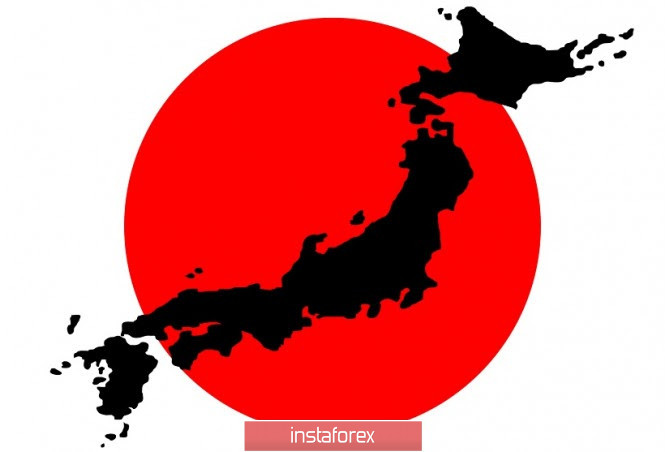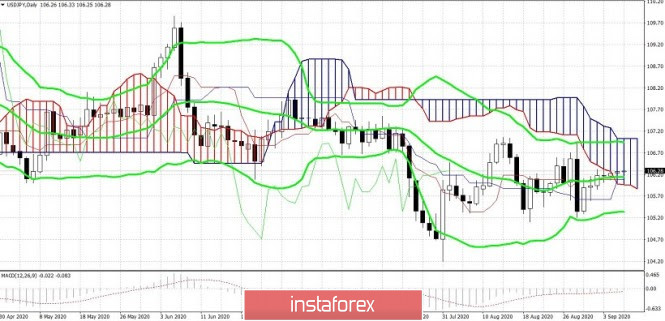Tuesday's Asian session passed without any problems. The market is experiencing a general recovery of the US currency. After a decline to multi-month lows, the dollar index is gradually regaining lost positions. The indicator returned to the area of the 93rd figure, reflecting the increased interest of traders in the greenback. However, the growth dynamics is smooth and rather inertial – on the eve of Friday's inflation release, market participants do not risk opening large positions on the dollar, thereby causing a flat for almost all dollar pairs.
The Japanese currency today, in turn, actually ignored the national macroeconomic reports. The reaction was minimal although the published statistics are not secondary. All this once again suggests that the USD/JPY pair is focused primarily on the behavior of the US currency and on the external fundamental background. The yen is interested in its own statistics in the third place.

Still, for the record, it should be noted that today, the final estimate of Japan's GDP growth for the second quarter was published and this estimate was revised up. The indicator remained in the negative territory but according to the final reports, the Japanese economy slowed by 7.6% rather than 8.1% at the height of the macroeconomic crisis. This is little consolation for USD/JPY pair but the fact remains. The level of household spending was disappointing. This indicator, which is an important indicator of consumer activity, fell to -7.6%. The forecast was slightly higher, at -3.2%. This indicator has been in the negative area since October last year-- that is, even before the Covid-19 epidemic-- and has repeatedly caused alarm among members of the Japanese regulator. In this case, we are talking about a serious decline. The indicator has almost returned to its spring values-- when Japan had a lockdown. Most likely, this is due to the fact that at that time, the country, and especially the multi-million-dollar Tokyo, was experiencing the peak of the second wave of the epidemic. Therefore, the level of Japanese spending has significantly decreased.
The GDP deflator also disappointed. This component, which estimates the level of inflation compared to the previous year, when calculating the key indicator, rose to just 1.3%, with the overall growth forecast of 1.5%. Similarly, wages were also disappointed – the growth rate remained in the negative area, reaching the level of -1.4%.
In other words, the Japanese national statistics did not help the yen. First, the statistics published today mostly came out worse than expected and secondly, the USD/JPY pair is now completely "led" by the US currency, which in turn is waiting for the publication of data on the growth of inflation in the US.
The conflict between India and China, which escalated at the end of last week, ended as soon as it began. Let me remind you that at the beginning of June, soldiers from both sides were killed in an armed skirmish on the Indian-Chinese border. This was the first case of military deaths in several decades of border confrontation between the two powers. Both States have nuclear weapons, so all the world's media showed interest in the conflict. The foreign exchange market reacted with a surge of anti-risk sentiment. The fact is that the territorial conflict between India and China over the Ladakh region in the Himalayas has been smoldering since the early 60s. In 1962, the two countries fought a border war for control of the region. In the 1990s, the parties agreed to de-escalate the disputed region. Since 2017, the border conflict between the two nuclear powers has resumed with renewed vigor due to Beijing's intention to pave a new road in Ladakh. In May of this year, a number of units were drawn to the line of control that replaces the border between the two countries. Then, at the beginning of the summer, another skirmish turned into an armed confrontation, as a result of which people were killed. The negotiations continued for several weeks, and ended in peace.
Last Friday, India again claimed it was a "provocation" to the Chinese side; many experts have sounded the alarm but the market did not have time to react to the situation. On Monday it became known that the parties were able to resolve the conflict situation without allowing its development.
Because of all of this, the yen has not received a trump card in the form of a surge in anti-risk sentiment in the market. So paired with the dollar, it is forced to focus on American events-- including political ones.

From a technical point of view, the pair returned to the range of 105.90-107.10, within which it has been trading for several months; or, to be more precise, since the beginning of the summer. The temporary decline to the bottom of the 105th figure was due to the sudden resignation of Japanese Prime Minister, Shinzo Abe, but later it became clear that the main contenders for his post are associates and followers of Abe, so no drastic changes (at least in the context of the economic course) should be expected. Against the background of such prospects, the pair has returned to the framework of the above-mentioned price corridor and is currently heading towards its "ceiling". From the current positions, we can consider longs with the first target at 106.90 (the upper line of the Bollinger Bands indicator) and 107.10 (the upper limit of the Kumo cloud on the same time frame).





















